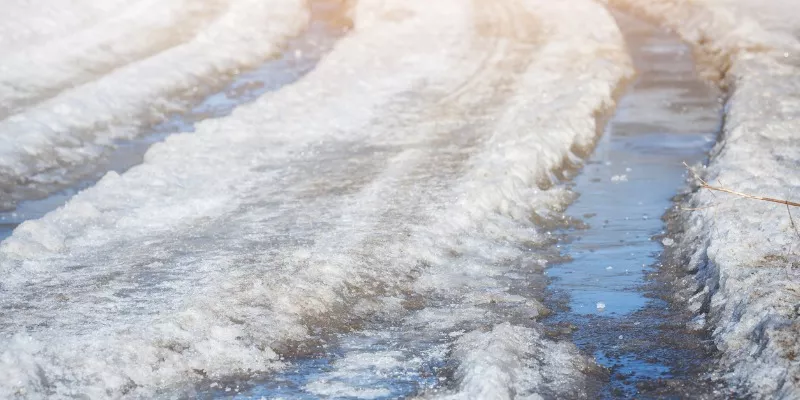We all know it helps keep our roads safe, but how does road salt work? Some of the most common questions around road salt include:
- Why does salt melt ice?
- How does salt melt ice on roads?
- What does salt do to snow?
Read on to learn more about road salt and to discover its benefits.
The History of Road Salt
According to the Cary Institute, New Hampshire was the first known location to use salt to de-ice roads, beginning in 1938. “By the winter of 1941- 1942, a total of 5,000 tons of salt was spread on highways nationwide. Between 10 and 20 million tons of salt are used today.”
Why Does Salt Melt Ice?
Salt melts ice and snow naturally. That’s because any substance that dissolves in water can lower the freezing point of water, with varying outcomes. Sugar can lower water’s freezing temperature; however, salt is more effective. Six times more so, due to its lower molecular weight.
Ultimately, the freezing point of water is lowered once the salt is added. This makes it more difficult for the water to freeze on our roads.
Quick Salt Facts
Road salt:
- Is made from rock salt or sodium chloride (table salt in its natural form). It doesn’t go through the same purification process as table salt, which is why it is brown or grey in colour.
- Road salt is compromised of grit, gravel and stones. These remain once the ice has gone. This helps with traction and makes roads and paths safer.
- Produces heat-generating brine which works to melt the ice away.
- Uses a process called ‘freezing point depression.’
At What Temperature Does Salt Melt Ice?
One pound of salt will melt forty-six pounds of ice at a temperature of 30°F (-1°C). When you get to 10°F (-12°C) and below, the effectiveness of regular road salt slows to a point where it barely works, and a de-icing solution is needed.
How Does Salt Melt Ice on Roads?
Adding road salt to dry roads won’t make much of an impact. For freezing point depression to work there has to be a little bit of water already on the roads.
When ice and snow are forecasted, trucks often pre-treat roads with a brine solution (a mixture of salt and water). The brine solution can help prevent ice from forming and reduces the number of trucks needed for spreading de-icer at a later point.
 How Long Does It Take for Salt to Melt Ice?
How Long Does It Take for Salt to Melt Ice?
How quickly salt melts ice will depend on:
- Temperature
- Time
- Rate of application
Normally it isn’t necessary to melt all the snow and ice on the road. By adding salt, you’re destroying or preventing the bond between pavement and frozen water. This is an efficient and more environmentally-sensitive approach compared to over-salting.
Looking for help keeping your roads clear of ice? Contact Lane’s Landscaping Supplies for all your road salt needs.




